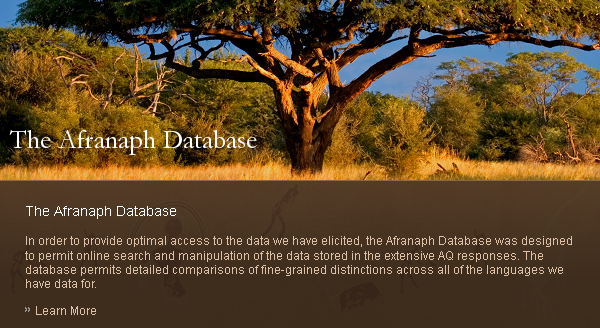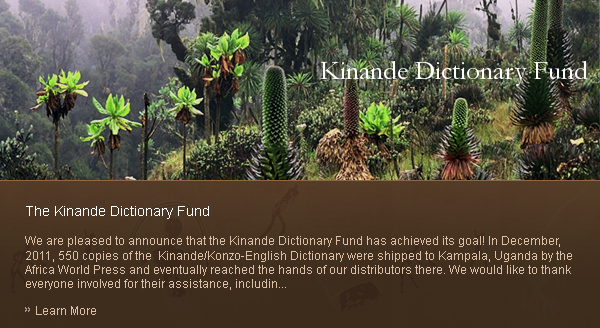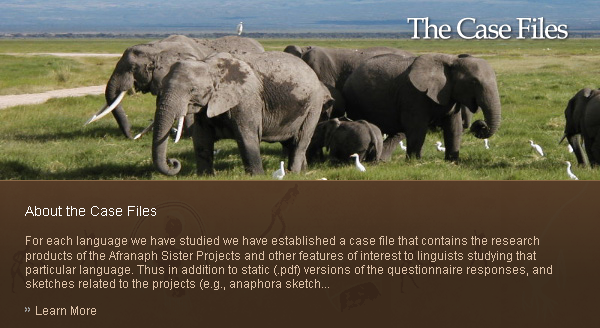The Multi-portal Design
For example, the Anaphora Portal includes the language and sentence entities that all the portals include, but also an entity called ‘anaphoric marker’. Anaphora Project researchers determine what the anaphoric markers are in a given language and what properties they have (according to our Database Property Attribution Guide). The Anaphora Portal includes search options that return sets of anaphoric markers based on their properties, in addition to searches that return sets of sentences or sets of languages. You can browse the database or use the search form to find languages, anaphoric markers or sentences of interest.
All of the portals have the same basic design, though the sets of analytic entities differ. At this writing, there are three portals: The Anaphora Portal, the Clausal Complementation Portal and the Generic Portal. The Generic Portal only permits searches for sentences and languages, but the browse page for any language will display all of the analytic entities that are otherwise unique to other portals. Anyone with an interest in languages for which we have data can search our basic sentence data using the Generic Portal with their own agenda in mind, ignoring any categorizations of the specific projects beyond our basic conventions of glossing and morpheme breakdown.
The Clausal Complementation portal has different analytic entities than the Anaphora Portal and thus permits searches that the other portals do not. Thus while research groups can organize data as they see fit, and design properties for entities that help them in their research, all of the sentence data collected for any project expands what is available in all the portals. For practical information about using the multi-portal design features in your research, go to About the Database





